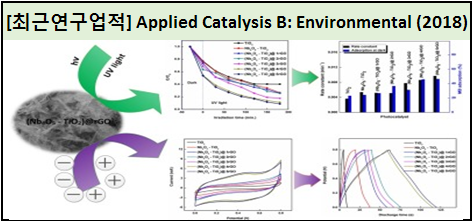|
Abstract |
A novel (Nb4O5-TiO2)@rGO nanocomposite was synthesized using a Na+ ion intercalation-assisted hydrothermal technique and examined its photocatalyst dye degradation and supercapacitor applications. The synthesized (Nb4O5-TiO2) nanorods were segregated by well dispersed reduced graphene oxide with different weight ratios. A strong interaction was observed between the (Nb4O5-TiO2) to rGO nanosheets, even with high rGO content (5 wt. %). Experiments examining the photocatalytic degradation of methylene blue suggested that the (Nb4O5-TiO2)@ 5rGO nanocomposites exhibit excellent charge carrier mobility with a higher methylene blue degradation rate (92%) than Nb4O5-TiO2 nanorods and other (Nb4O5-TiO2)@rGO nanocomposites under ultraviolet and visible light irradiation. On the other hand, the (Nb4O5-TiO2)@ 5rGO nanocomposite exhibited excellent electrochemical performance with high specific capacitance (365 F g-1), long cycling stability (∼100% capacitance retention after 1000 cycles), and good rate capability (70% capacitance retention at 25 A g-1). In addition, the photocatalytic and supercapacitor efficiency of the (Nb4O5-TiO2)@rGO nanocomposite increased gradually with increasing amount of rGO in the composite. These features collectively demonstrated the high rate of photocatalytic degradation efficiency and good energy storage performance of the (Nb4O5-TiO2)@ 5rGO nanocomposite, which suggests a new route for large scale applications in energy and environmental fields.
|

